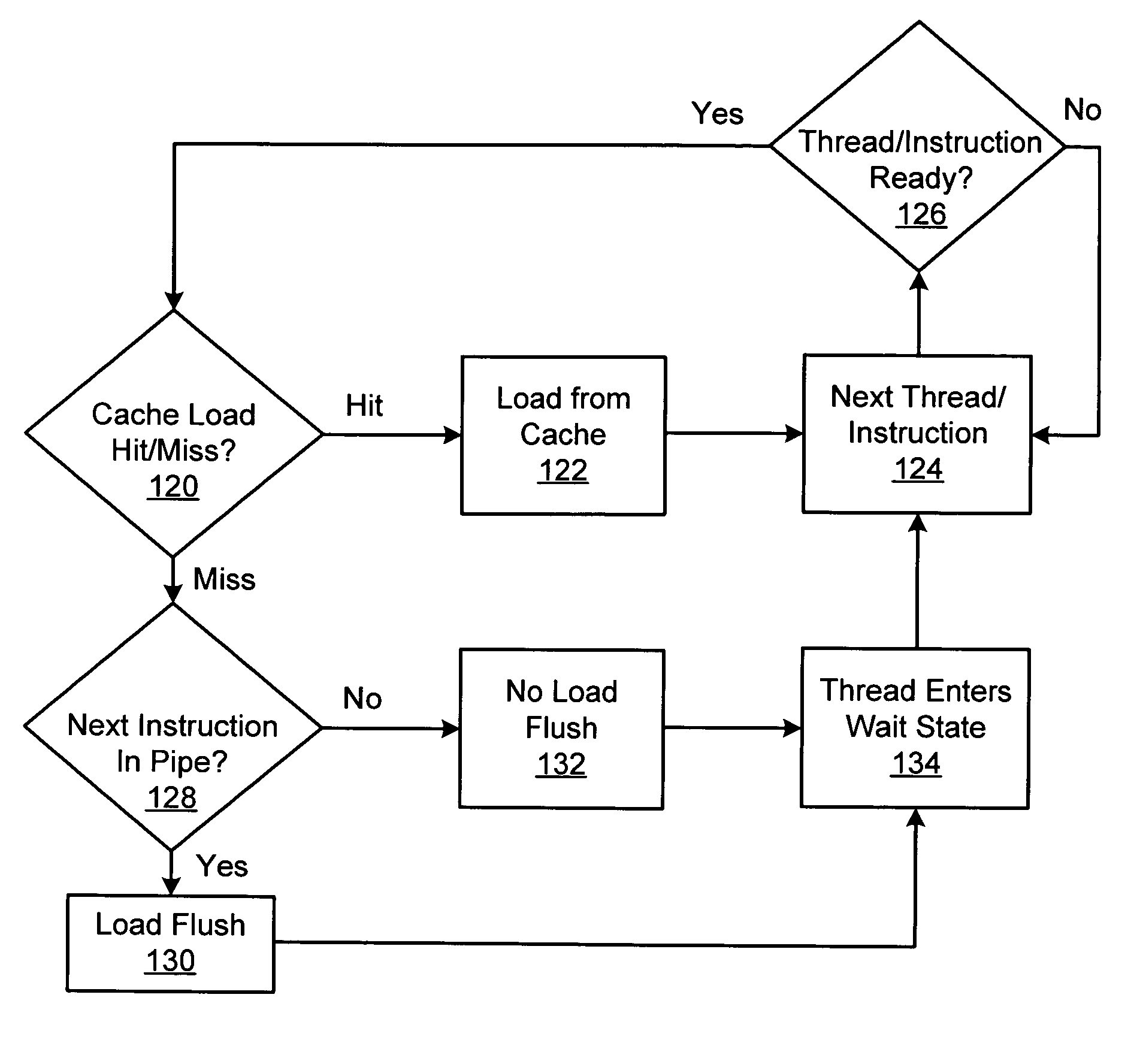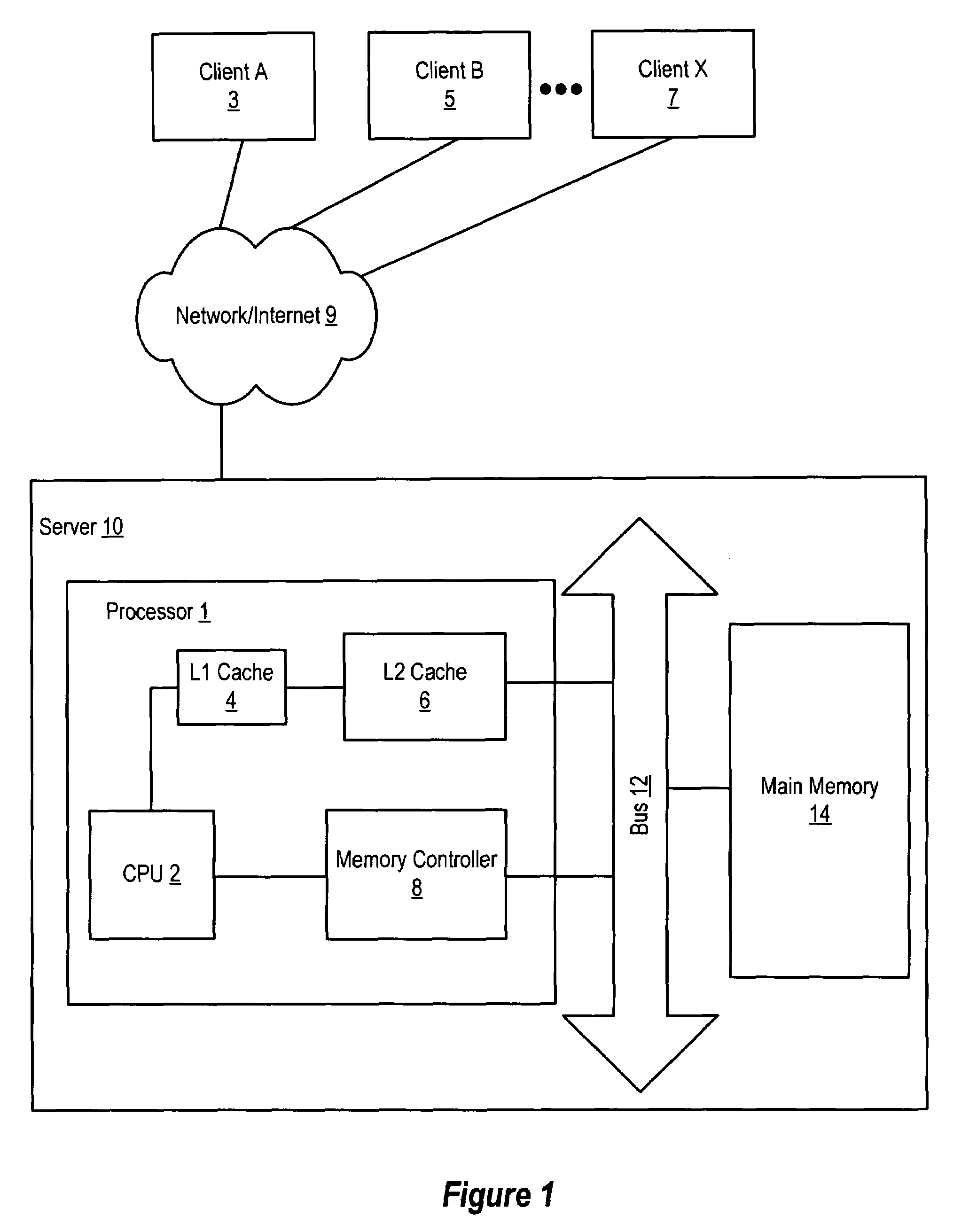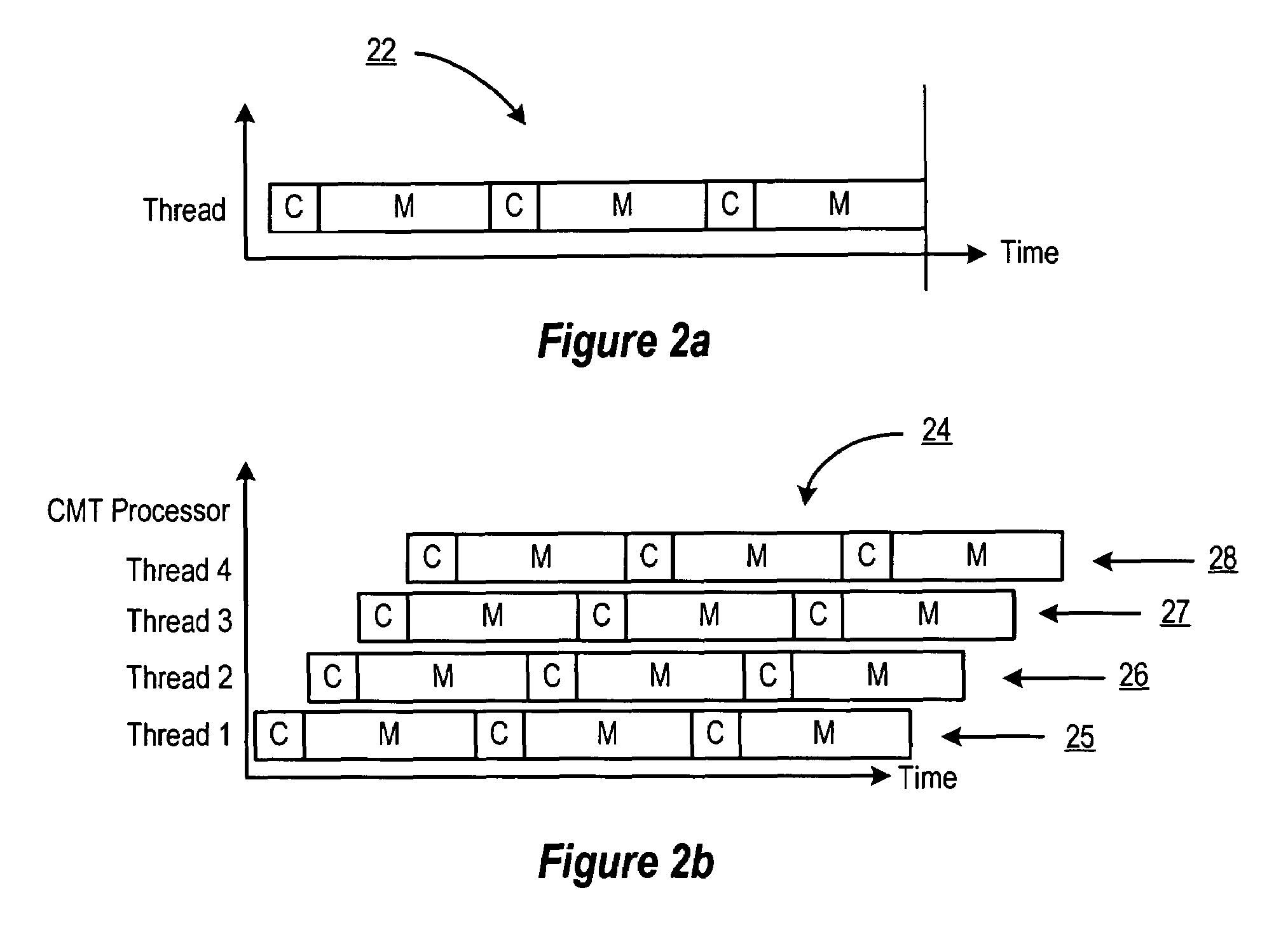Handling cache misses by selectively flushing the pipeline
a pipeline and cache technology, applied in the field of processing or computer design and operation, can solve the problems of stalling and idling pipelines, affecting the performance of pipelines, and elapsing a large percentage of time during pipeline stalling and idling, so as to eliminate unnecessary instruction re-fetch operations, improve the overall fetch bandwidth and multithreaded performance, and improve the effect of multithreaded performan
- Summary
- Abstract
- Description
- Claims
- Application Information
AI Technical Summary
Benefits of technology
Problems solved by technology
Method used
Image
Examples
Embodiment Construction
[0020]A selected embodiment of the present invention is shown in FIG. 3, which depicts a simplified schematic diagram of a processor chip 30 having multiple processor cores for processing multiple threads. In the illustrated embodiment, processor chip 30 includes a plurality of processor cores 36a-h, which are also designated “C1” though “C8.” Each of cores 36 is coupled to an L2 cache 33 via a crossbar 34. L2 cache 33 is coupled to one or more memory controller(s) 32, which are coupled in turn to one or more banks of system memory 31. Additionally, crossbar 34 couples cores 36 to input / output (I / O) interface 37, which is in turn coupled to a peripheral interface 38 and a network interface 39.
[0021]Cores 36 may be configured to execute instructions and to process data according to a particular instruction set architecture (ISA). In one embodiment, cores 36 may be configured to implement the SPARC V9 ISA, although in other embodiments, it is contemplated that any desired ISA may be e...
PUM
 Login to View More
Login to View More Abstract
Description
Claims
Application Information
 Login to View More
Login to View More - R&D
- Intellectual Property
- Life Sciences
- Materials
- Tech Scout
- Unparalleled Data Quality
- Higher Quality Content
- 60% Fewer Hallucinations
Browse by: Latest US Patents, China's latest patents, Technical Efficacy Thesaurus, Application Domain, Technology Topic, Popular Technical Reports.
© 2025 PatSnap. All rights reserved.Legal|Privacy policy|Modern Slavery Act Transparency Statement|Sitemap|About US| Contact US: help@patsnap.com



